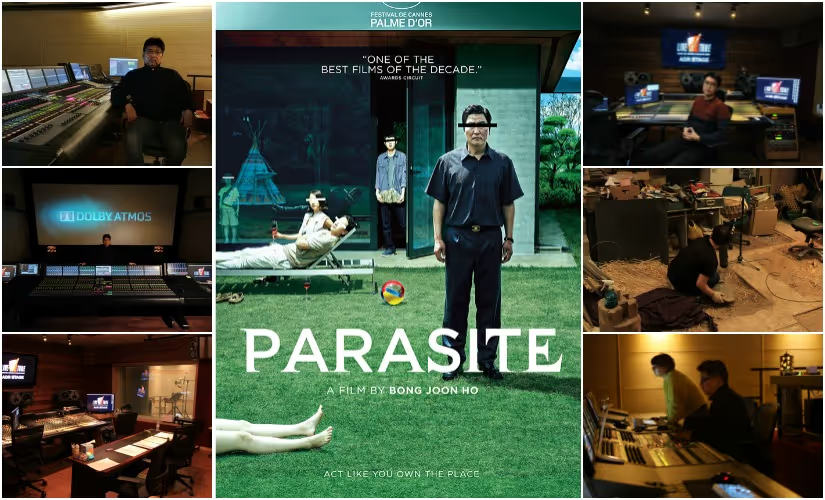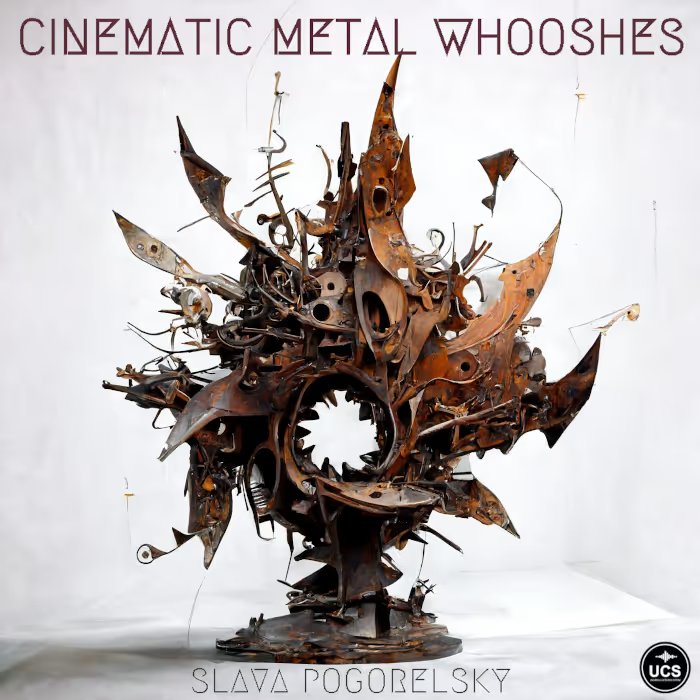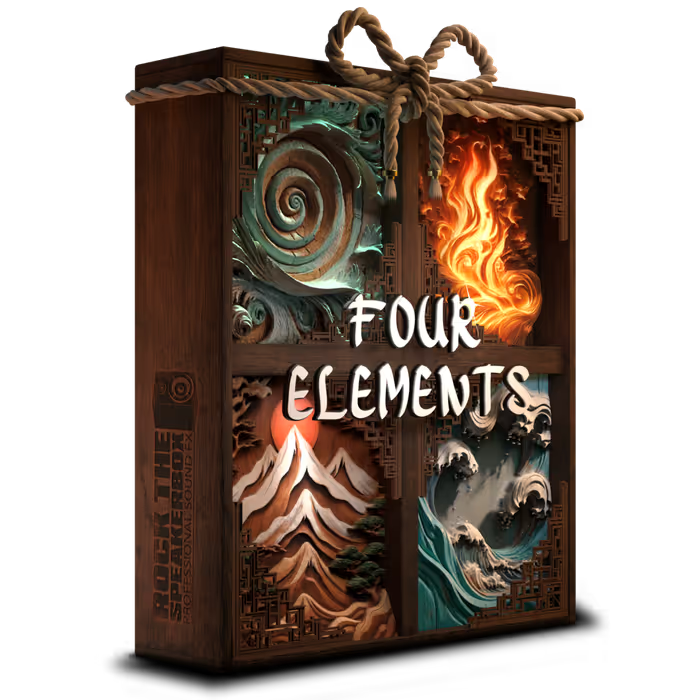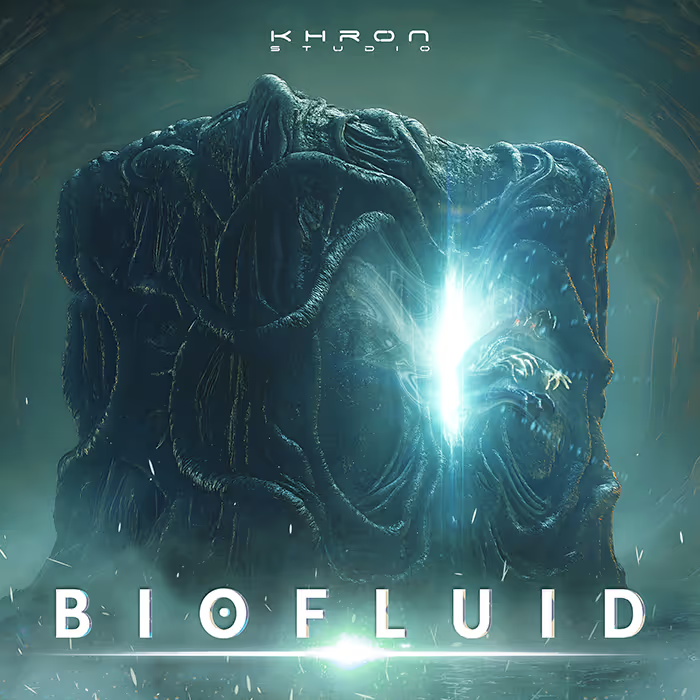They say the grass is greener on the other side. And dammit, sometimes it is, as director Bong Joon Ho shows us in Parasite — a darkly comedic study of class struggles. The wealthy Park family, who lives in a grand house on a hill in a quiet neighborhood, is infiltrated by the working-class Kim family, who conversely lives in a basement apartment below street level. The Parks hear birds and gentle breezes; the Kims hear dogs, cars, and noisy neighbors. The Park’s living room window overlooks a trim and orderly yard; the Kim’s window frames the favorite urination spot of the local drunkard. It’s clear that the Park’s side of the social divide is indeed greener (and pest-free I might add).
Through devious means, the Kims gain employment into every available position at the Park residence. First the son, Ki-woo Kim, takes over as the English tutor to the Park’s daughter Da-hye. Ki-woo then informs his sister Ki-jung that the Park’s are looking for an art instructor for their son Da-song. Next, the Kims plot to get their father Ki-taek employed as the Park’s chauffer. Finally, the Kims manage to get the Park’s longtime housekeeper Moon-gwang fired, to be replaced by their mother Chung-sook. But the Parks don’t know that their new employees are all related.
The Kims enjoy their fancy new employment until they discover that Moon-gwang had her husband Geun-se living in a secret basement bunker under the Park’s house. When Moon-gwang figures out that the Kims have leeched onto the Parks, she tries to rat them out. But the situation turns deadly as both families try to win favor (and continued employment) with the Parks.
South Korea-based sound supervisor/re-recording mixer Ralph Tae-Young Choi is a longtime collaborator with director Bong Joon Ho, having worked on all of his films, including Snowpiercer and Okja.
Choi and his sound team on Parasite —Young Kang Hye (sound designer/sound effects editor), Byung-in Kim (supervising ADR editor), Sung-gyun Park (Foley artist), Chung-gyu Lee (Foley artist), and Shin i Na (Foley editor) — won the MPSE award for sound editing on a foreign language feature film.
Here, Choi talks about their use of sound to emphasize the differences of social class between the Parks and Kims, how music and effects worked together to build tension, and how they used Foley and reverb to make the custom-built production set feel like the opulent, spacious Park residence.
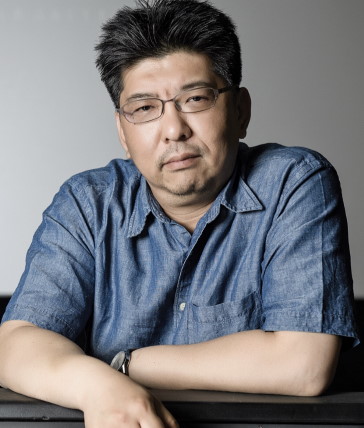
Ralph Tae-Young Choi (RTC): The picture editing ended at the end of November 2018. The sound editing (dialogue, SFX, backgrounds) and recording (ADR and Foley) at Live Tone Studios started in December 2018 and went until the end of January 2019. I had two weeks for pre-dub mixing and two weeks for the final mix in Dolby Atmos in February 2019.
What were some of the first sounds or scenes the director wanted you to focus on?
RTC: Director Bong Joon Ho emphasized the importance of the door sounds of the Park’s house — the sound of the iron gate outside the house, the sound of the front door entering the house, the sliding gate in the hall leading into the living room, the sound of the sliding door for entering the underground secret room, and the sound of the glass door coming up from the underground parking lot. The door is a metaphorical sound representing the difference between the haves and have-nots.
The door is a metaphorical sound representing the difference between the haves and have-nots.
The main locations in the film — the rich Park house, the poor Kim house, and the neighborhoods surrounding the Kim’s house — were all custom built for this film. How did you use sound to help bring these locations to life?
RTC: In the semi-underground house of the poor Kim family, there’s a lot of interference from outside noise flowing into the interior, designed with a number of Korean-style ambience sounds, including the sound of cars passing by the alley, the sound of neighborhood people, the sound of street vendors, piano practice, barking dogs, and the sound of cats.
In the case of the rich Park house, the living room and kitchen were designed with a quiet, peaceful bird sound with quiet room tone; there’s minimal interference from outside noise.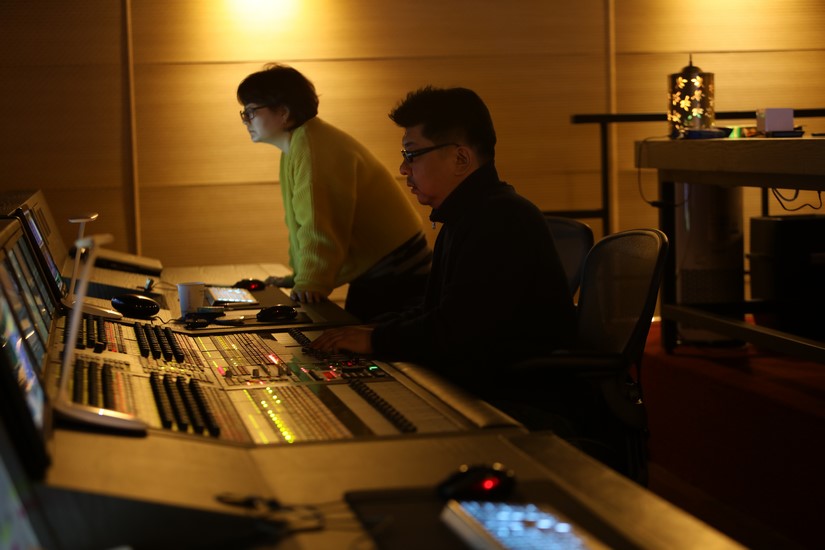
And in the rainy scene, the difference in space was created by the different tone/color of the rain sound coming from outside into the kitchen and the living room.
…the ambient air tone of the basement in each scene was actively designed so the sound matched the psychological state of the character.
For the secret basement, we designed the sound of water flowing through the pipes and a heavy air tone. In addition, the ambient air tone of the basement in each scene was actively designed so the sound matched the psychological state of the character.
For example, when Ki-woo [Woo-sik Choi] goes back down to the basement to kill Geun-se [Myeong-hoon Park], the air tone in the basement was designed differently in color and size according to Ki-woo’s anxious psychology. Instead of score, we use the air ambience sound to express the tension of Ki-woo’s psychological state.
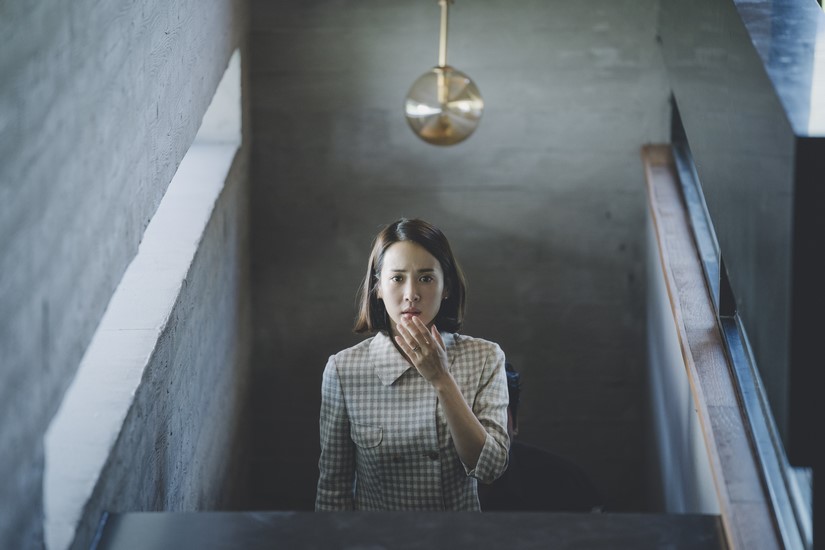
What were some of the main sonic elements that helped to contrast these two different ‘worlds’ of the haves and have-nots?
RTC: The difference in sound between the social classes in Parasite starts with the spatial design of the houses in which each character lives.
For the poor Kim house, we used sound to accentuate the semi-underground location and limited size of the space with its narrow interior. We achieved this by utilizing the external ambience noises from the Kim’s neighborhood.
Outside noises — such as the noise of the neighborhood in the opening sequence of the movie, the sound of footsteps moving across the ceiling coming from the upper floors of the house, and the sound of the local merchant’s microphone — were used to create an external ambient sound that was heard inside the basement apartment. We placed these sounds in the side and back surround speakers and ceiling speakers.
Conversely, the rich Park house is a quiet neighborhood of rich people. There wasn’t as much environmental noise interference. So to help the audience imagine the location and size of the rich Park house, our sound design used elements that can be expressed in the indoor space.
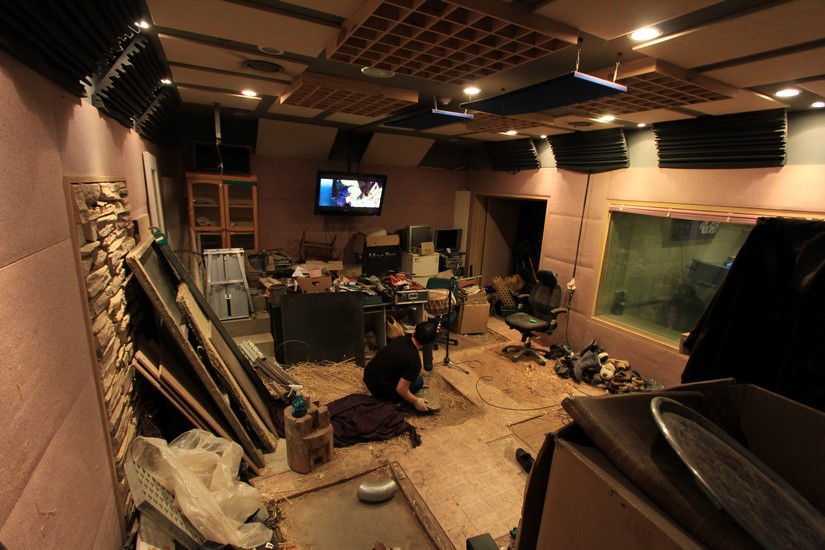
For example, for dialogue in the rich Park house, we used reverb that extended into the surround channel to express the wide space of the rich house. Since the custom-built set for the Park house was constructed from wood, the production sound effects could not be used because it wasn’t representative of the marble and cement surfaces shown in the movie. So, I designed all the footstep sounds with Foley recording and also used a variety of reverbs on top of a rich, wide indoor space and basement.
There’s a scene in the secret basement in which Dong-ik Park [Sun-kyun Lee] comes home from work, and Geun-se hears the sound of his feet walking up the stairs from the underground parking lot. In the Atmos mix, we placed those footsteps in the ceiling speaker. And the strange atmosphere in the secret basement, which we first enter during the rain storm, we created that using the sound of water moving through pipes, which were placed in the ceiling speaker.
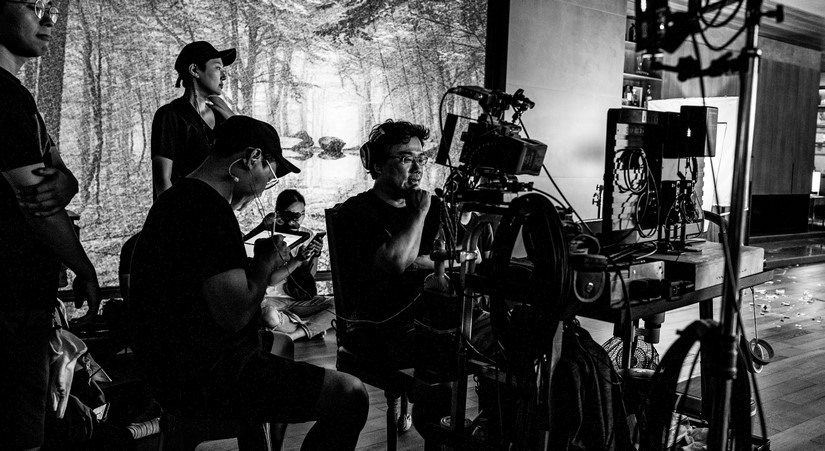
How were you able to use sound to convey the tension in this film? Can you share some examples of specific scenes where sound (rather than music) set the tone?
RTC: Basically, the way to convey tension without using music is to have minimal sound or silence.
The audience can feel nervous about the silence on the screen. To convey this tension, the basement air-tone was designed in depth. In the scene where Ki-woo goes back down to the basement with the scholar’s rock, we accentuate his breathing sound to communicate Ki-woo’s nervousness. We designed the texture of the air-tone in each scene, and the sound of his footsteps as he walks down the stairs into the basement. Also, to deliver the maximum amount of tension to the audience, the air tone in the basement slowly rises before Ki-woo gets caught in Geun-se’s snare.
We always experience new feelings of anxiety and tension in our lives when we encounter sounds that are unfamiliar to us, separate from the sounds of our unconscious lives.
To create a strange, uneasy feeling you need to use sounds that aren’t natural and familiar. We always experience new feelings of anxiety and tension in our lives when we encounter sounds that are unfamiliar to us, separate from the sounds of our unconscious lives.
To create new, strange noises, I use filters or EQs to design tones and then layer these designed sounds together. I sometimes increase or decrease the length of the sound, and I also add air to the sound using reverb.
The rain sequence is really important. The torrential rain ruins the Park family camping trip. But for the Kim family, everything gets ruined — their home and everything in it. The Parks return to sleep in their perfect house and the Kims end up sleeping in an emergency shelter. How did you use the sound of rain and rushing water to illustrate this difference?
RTC: It is the law of nature that water flows from top to bottom. The rain falling on the rich Park house is just normal and the water flows down to the poor Kim’s house. Ki-taek’s [Kang-ho Song] family, who are leaving the rich Park house, continues to follow the flowing rainwater downwards. The sound design for this varies in texture depending on the space and location of the scene but persists in quantity. In particular, the close-up sound of rain water flowing is a metaphor that drives Ki-taek’s family to despair even more.
Upon arriving at the Kim’s semi-underground house, we emphasized the sound of continuous rain flowing through the windows of flooded homes, while the back-flowing toilet water sound clearly represents their social class and tells of life in a semi-underground house below normal level/sea level.
What were some of your sound sources for the rain and water? Did you do any field recordings to get specific sounds you were looking for?
RTC: Most of the water and rain sounds were recorded in south Korea and were also sourced from libraries we purchased.
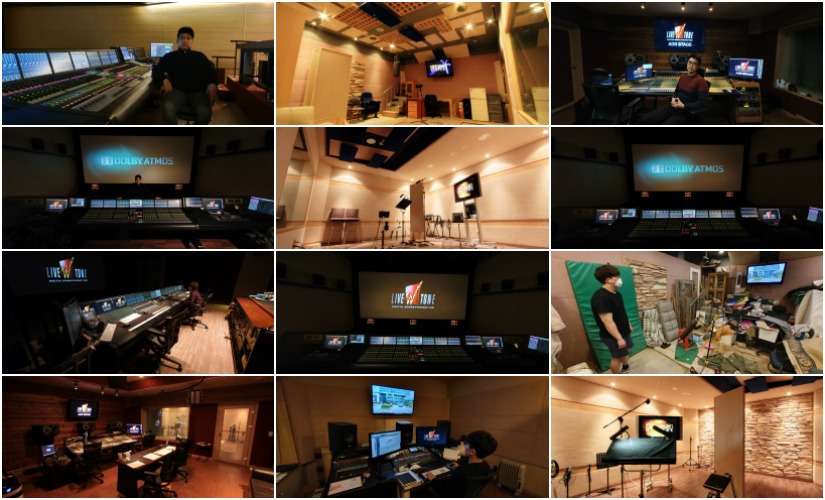
There’s a great scene near the end of the film. Ki-woo goes back into the basement with the scholar’s rock and sees Moon-gwang [Jeong-eun Lee] dead on the floor. Ki-woo is trapped in Geun-se’s snare, but manages to escape. As Ki-woo is running away, the metal handle of the snare bounces off the floors and walls. What a great sound! How did you make that?
RTC: That sound was basically made from Foley recording. The sound of the metal handle of the snare bouncing off the floors and walls was made from a mix of Foley recordings and library sounds. During the pre-dub mix session, I used EQ, compression, and reverb too.
I also love the sound of the wall of jars that slides across the opening to the secret basement hideout. What went into creating that sound?
RTC: The sound of the wall of jars was made by the Foley artist using a large jar of glass and a large ceramic pot.
What was the most challenging scene for sound editorial? What went into creating the sound of that scene?
RTC: There is a crazy sequence that took place underground while making “ram-dom,” and there’s a chaotic sequence where Geun-se tried to kill Chung-sook [Hye-jin Jang], who is the wife of Ki-taek, at the birthday party for Da-song [Hyun-jun Jung].
The great challenges and opportunities of these two scenes were using sound to express the experience of direct shock as much as possible. We had the challenge of directing the extremely shocking situation of the Kim family finding out about the existence of the basement, and the opportunity to express that through the detailed and impactful mix of music and sound effects.

The high point for sound in the movie was when the Park family was returning from camping due to heavy rain. The scene of Moon-gwang, who tries to inform the Parks of the Kim family’s plot and their defense to stop it, led to the unexpected brutality of the two families competing against each other. The sound of Moon-gwang tumbling down the stairs and hitting her head against the wall had to send a direct shock to the audience, which we achieved through sound effects and score.
The sound of Moon-gwang tumbling down the stairs and hitting her head against the wall had to send a direct shock to the audience…
In contrast, Geun-se’s attitude of attacking Ki-woo, who came back to the basement during Da-song’s birthday party, and Geun-se going upstairs to kill Chung-sook with a kitchen knife, seemed very cool and calm. We hear the sound of a very peaceful and happy birthday party, which further emphasizes the shock of Geun-se’s crazed behavior. The mix of sound was meant to shock the audience.
Since you were the re-recording mixer too, can you tell me about your approach to bringing your sounds and composer Jung Jae Il’s score together? Were you able to hear the score while doing sound editorial? Or were you hearing both elements together for the first time on the dub stage?
RTC: In the case of Parasite, I was able to hear the temporary score while doing sound editorial. And I listened to the final score during the premix. The music director supplied me with several music stems for Dolby Atmos mixing.
Director Bong Joon Ho actively uses score for the sound in movies. I’ve been Bong Joon Ho’s sound supervisor and re-recording mixer for all of his films, and I have been seeing how Bong Joon Ho uses the score. He knows there is a limit to the emotional storytelling that the dialogue and sound effects could deliver, and the emotion that director Bong Joon Ho wanted to convey to the audience could be achieved using music. I think Parasite has been the best example of how Bong Joon Ho uses music.
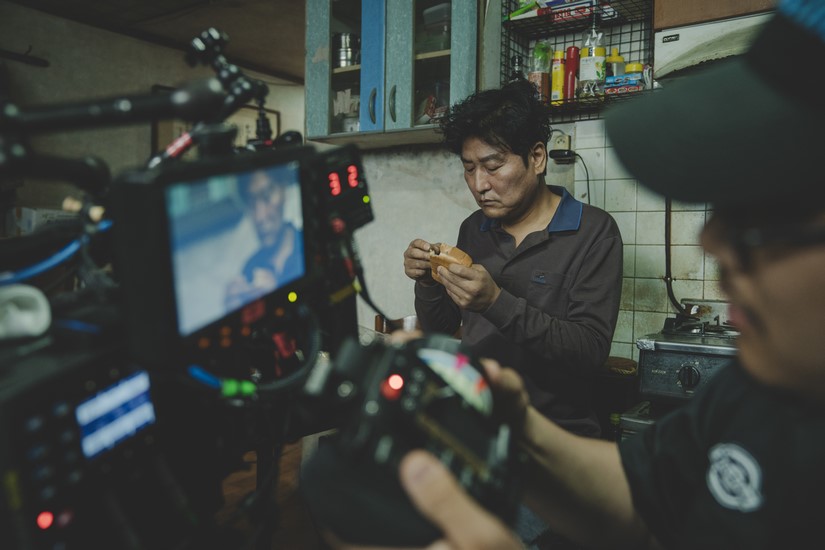
Sometimes he uses two different pieces of music at the same time to express the situation of the scene and the psychology of the character.
Sometimes he uses two different pieces of music at the same time to express the situation of the scene and the psychology of the character. It’s a musical production method that is also used in Memory of Murder, Okja, and so on, and it’s also represented in Parasite
I always try to mix music with the goal of maximizing emotional storytelling from the sound, reflecting the director’s intention, and I always welcome that challenge with Bong Joon Ho.
What are you most proud of in terms of sound on Parasite?
RTC: Collaborating with the most creative director I’ve ever met, I’m always working on sound as a new challenge and I’m most proud to continue to expand my Bong-style sound field.

